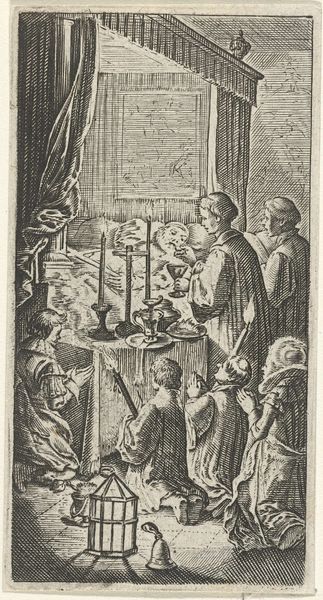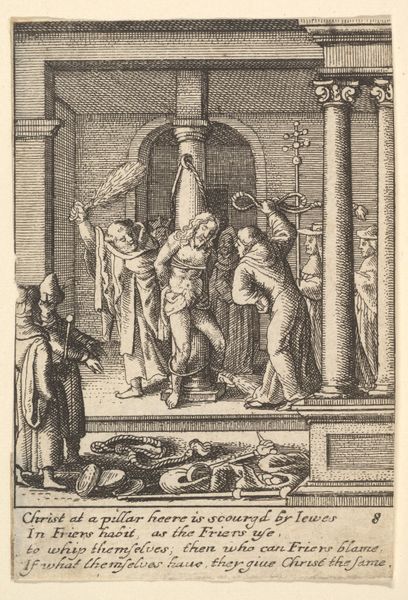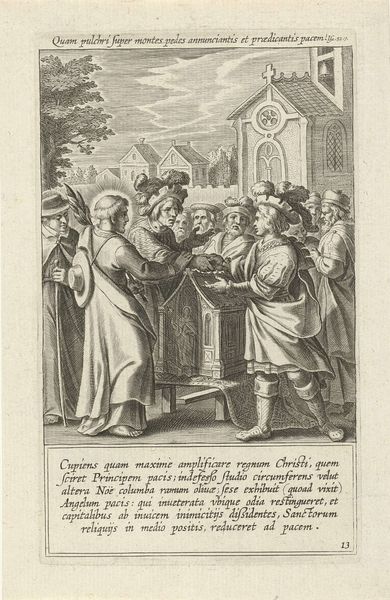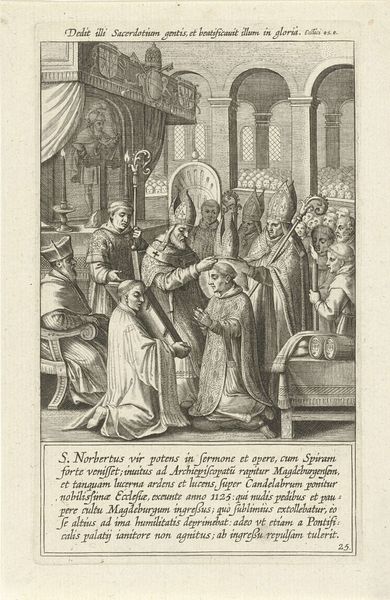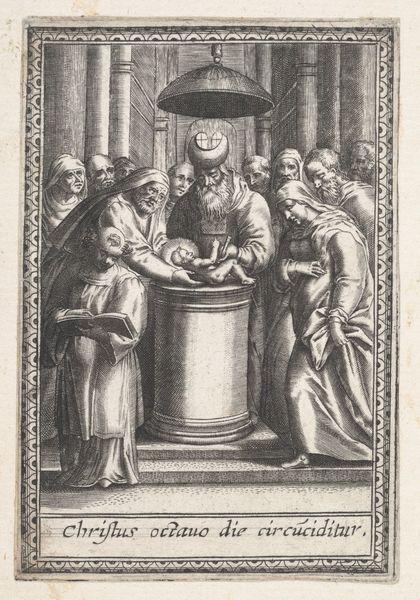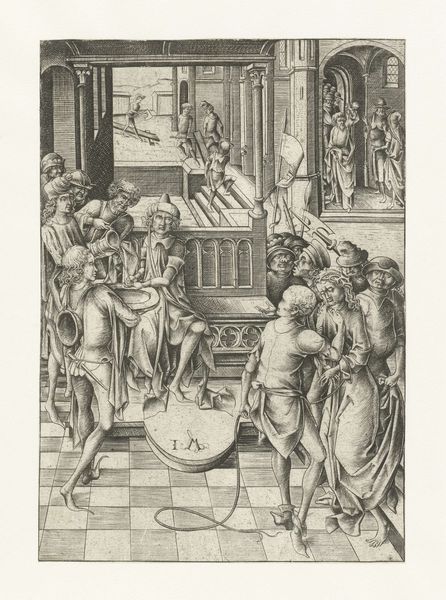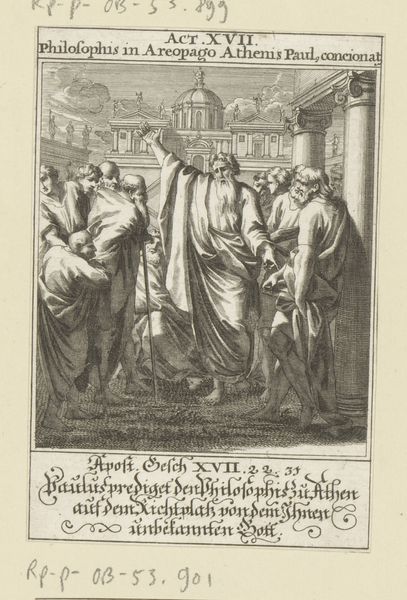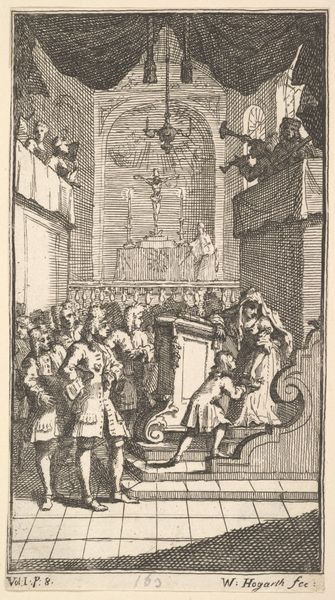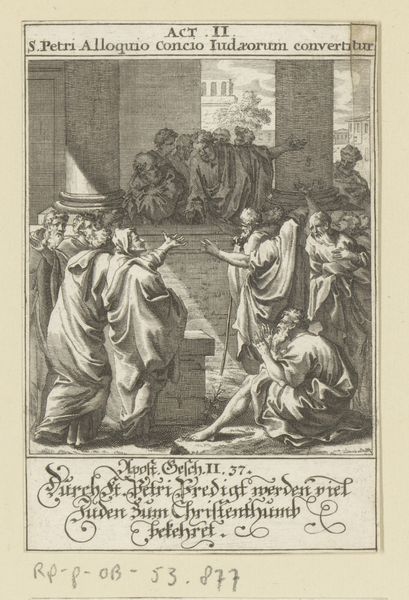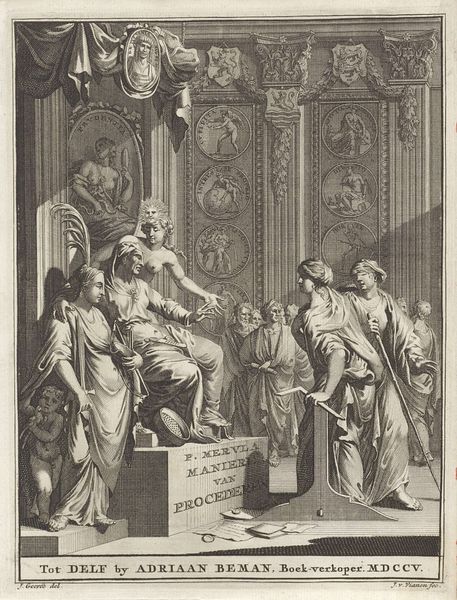
print, engraving
#
narrative-art
#
baroque
# print
#
old engraving style
#
figuration
#
line
#
history-painting
#
engraving
Dimensions: width 90 mm, height 150 mm
Copyright: Rijks Museum: Open Domain
Curator: Here we have Theodoor Galle’s "Baptism of Saint Dominic," an engraving dating back to 1611. It depicts the sacrament within a grand, if sparsely populated, architectural space. Editor: The first thing that strikes me is its formality, almost like a staged tableau. There's a stillness, despite the supposed action of a baptism, which I find somewhat unsettling. Curator: Yes, the rigidity is characteristic of its time. Galle utilizes line engraving to convey a sense of solemnity and spiritual weight. The placement of the infant Dominic, under the radiant star—it evokes centuries of symbolic meaning related to innocence, divine guidance. Notice how this celestial sign anticipates Dominic’s future sanctity and luminescence within the church. Editor: It's fascinating how Galle uses this scene to propagate a very specific, sanctioned narrative. Think about the political landscape in 1611: religious authority, carefully managed imagery and messaging like we see with the prominent display of the star, were incredibly important for maintaining established power dynamics. The visual story becomes a tool. Curator: Precisely. Dominic himself would later become a pivotal figure in the Catholic Church, and Galle emphasizes the miracle accompanying his birth. The star not only signifies his divine purpose, it serves as visual prophecy. Moreover, we cannot ignore the didactic intent characteristic of the religious Baroque art; everything, down to the Latin inscriptions, aimed to instruct and reinforce specific beliefs. Editor: The racialized history of sanctity makes me ponder this work through our contemporary lens, demanding critical examination of the implied social hierarchy and exclusion inherent in portraying such figures and events this way. What about the countless unacknowledged figures throughout history whose spiritual labor never warranted such commemoration? Curator: A fair and essential question. Works such as Galle's present a window not just into religious belief, but into structures of power and privilege that demands to be recognized. Editor: Seeing it from that perspective, I’m struck again by the artificiality. But it now prompts necessary discussions of what it sought to legitimize. Curator: Yes, viewing it through today's realities offers fresh perspectives and conversations about the artwork and its message.
Comments
No comments
Be the first to comment and join the conversation on the ultimate creative platform.
